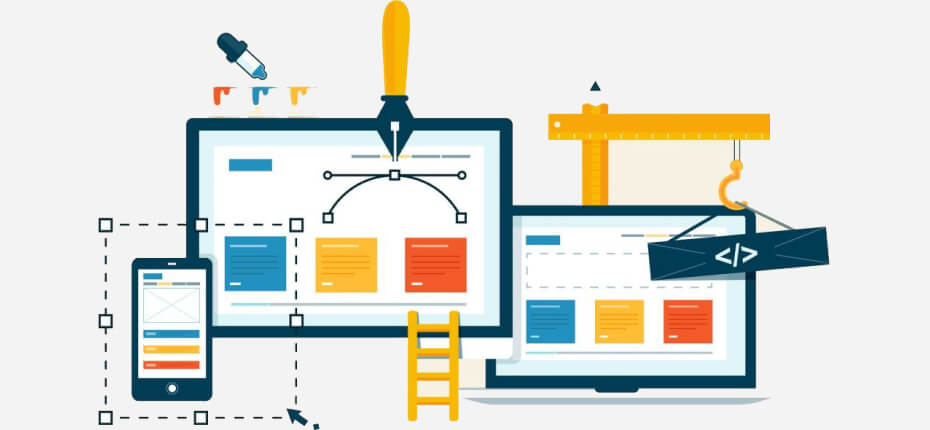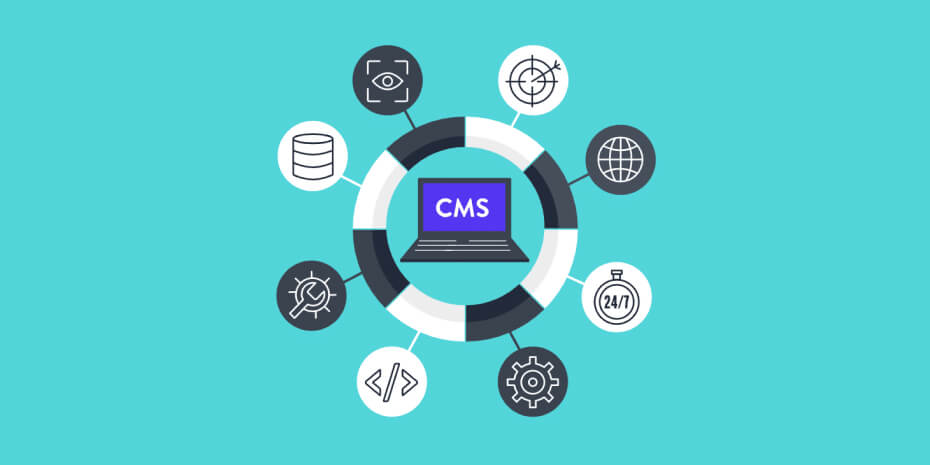The simplest type of website to make is a static website because it doesn’t require any special code or databases. A static website has material that cannot be changed without the developer updating the site’s source codes.
A website with a content management system (CMS), usually referred to as a dynamic website, is one that can display various contents from the same source code, making it more dynamic and sophisticated. In other words, a dynamic website is one that updates its information based on the audience, the time, the audience’s time zone, the audience’s native language, and other variables.
What is a Static website?
A static website is the most basic type of website, consisting only of HTML coding and without any custom or dynamic scripting. In simple terms, a static website is a straightforward, small-scale company website that contains just two to three pages of content and has no extra features. It uses client-side programming, including JavaScript, HTML, and CSS, so server-side scripting is not necessary.

Each page is a standalone HTML file with only hyperlinks and images as interactive elements just put. Static websites are just those that don’t change unless the source code does.
They require no further knowledge beyond HTML and are simple, inexpensive, and easy to host.
What is a Content Management System (CMS) website?
A CMS website is also referred to as a dynamic website since it has pages with constantly changing material that allows people to engage with it more actively than just reading it.

In addition to client-side scripting, creating a CMS website will require a server-side scripting language like ASP, PHP, JavaScript, JSP, ColdFusion, etc. A CMS website, specifically an e-commerce site and social media site, combines server-side scripting and client-side scripting.
The final HTML page is displayed on the client’s web browser after the codes have been divided and segregated on the web server when the viewer accesses a CMS website.
Different features of Static and Dynamic websites (CMS)
1. Web page coding for a Static and CMS site
A static website has a set number of pages and a preset layout that is visible to the viewer. It is not necessary to use any special software in order to create a static website; all that is needed is familiarity with HTML and CSS, which can be done with a straightforward text editor like notepad. A static website consists of a number of words, photos, and multimedia components that have been marked up using HTML and CSS.
When a person accesses a CMS website, material is generated for them based solely on server-side programming knowledge and is completely tailored to their preferences. Coding for CMS websites is also more expensive because webhosting, databases, or servers must be created.
2. Website content in a Static and CMS
Because each viewer sees the same page because they are all viewing the same HTML file, a static website may distribute its contents to consumers without the need for modification or processing. Therefore, in order to modify or update the website, the site’s developer needs to be knowledgeable with HTML coding.
In a CMS website, the material is already created to serve the viewers depending on the clients’ demands and to sometimes make adjustments. Since the contents of a CMS website may be updated by anybody, even those without technical expertise can do so easily because the contents are tailored uniquely for each reader.
3. Flexibility of Static and Content Management Systems
In order to fit the layout for each page’s specific layout, a static website is developed and created differently for each page’s contents. It is simple for the web designer to include unique effects on various sites, which can thus be more versatile and adjustable dependent on user desire.
In comparison to static websites, CMS websites are less flexible because each page must have its own high-end web server and content management system in order to produce a special combination of dynamic content and interactive features.
Conclusion
Because of its convenience and efficiency, which significantly lowers the cost for maintaining the website over time, a CMS website offers a wide range of benefits when it comes to dynamic content, interactive features, and multimedia elements. Due to its simplicity and lack of unnecessary bells and whistles, static websites may be constructed much more quickly. The CMS website is more interactive as well as consistently stylish and sophisticated.
Author
Jayesh Patel
Jayesh Patel is a Professional Web Developer & Designer and the Founder of InCreativeWeb.
As a highly Creative Web/Graphic/UI Designer - Front End / PHP / WordPress / Shopify Developer, with 14+ years of experience, he also provide complete solution from SEO to Digital Marketing. The passion he has for his work, his dedication, and ability to make quick, decisive decisions set him apart from the rest.
His first priority is to create a website with Complete SEO + Speed Up + WordPress Security Code of standards.